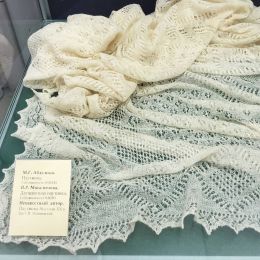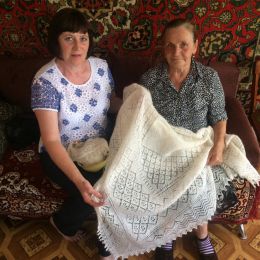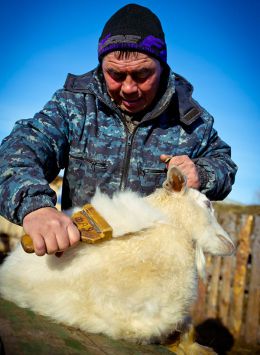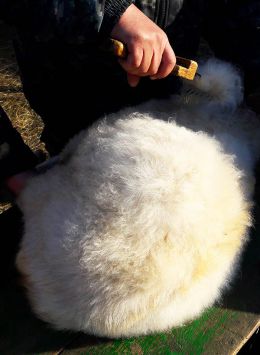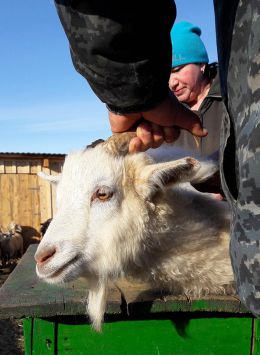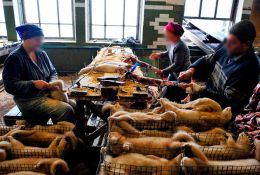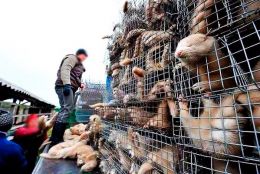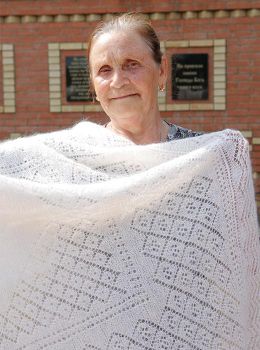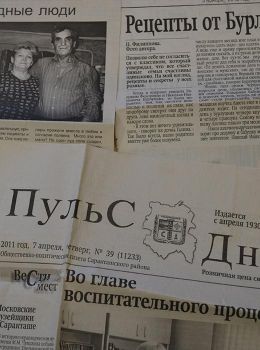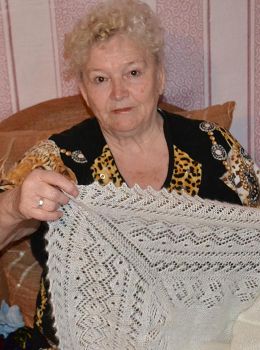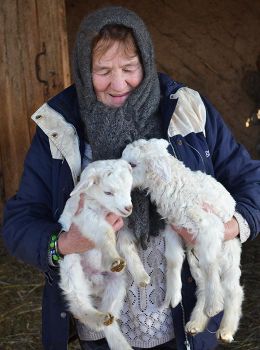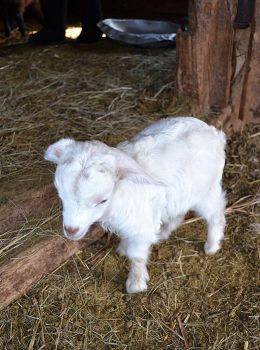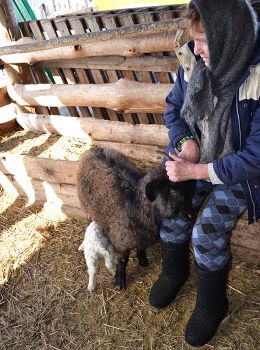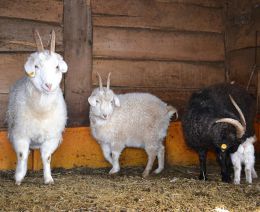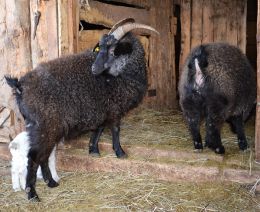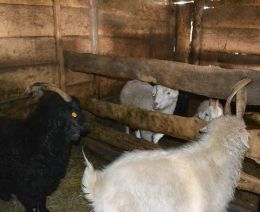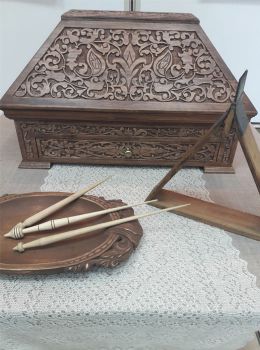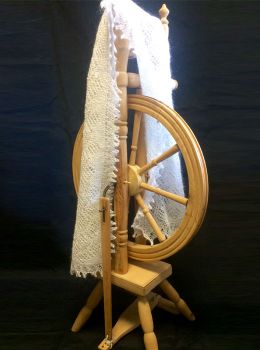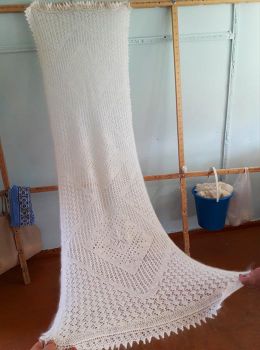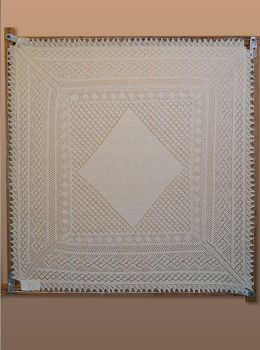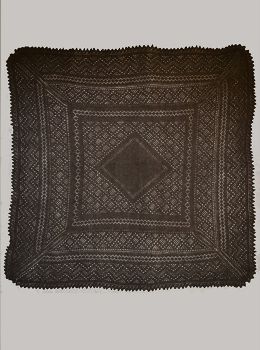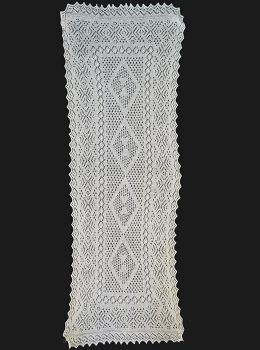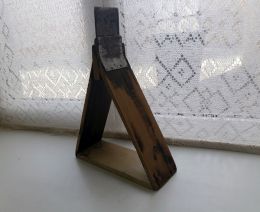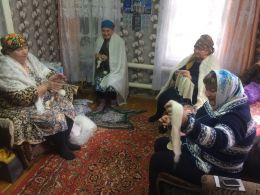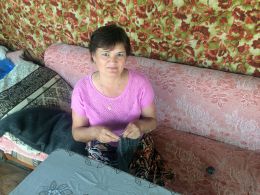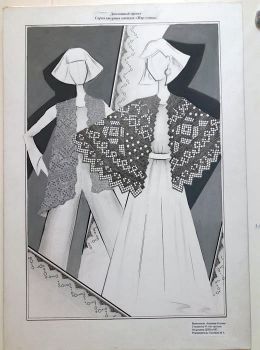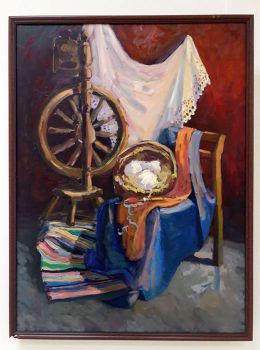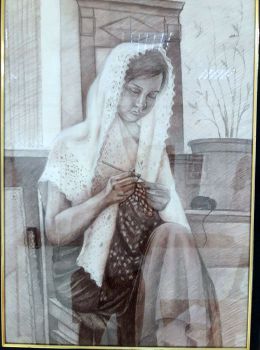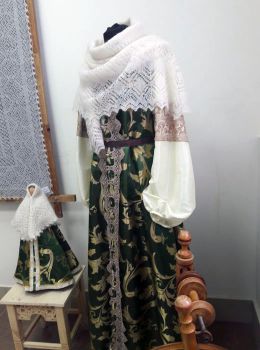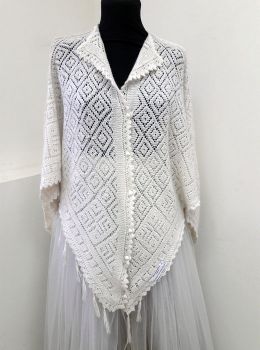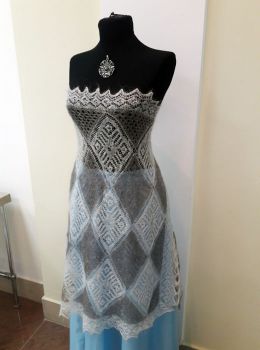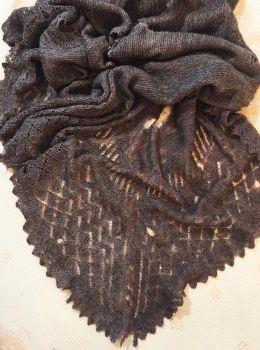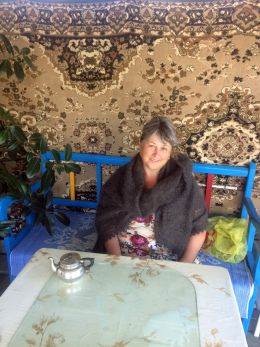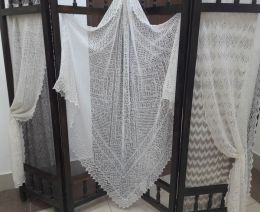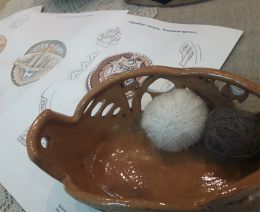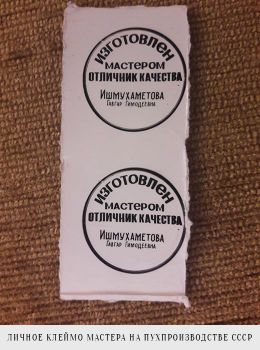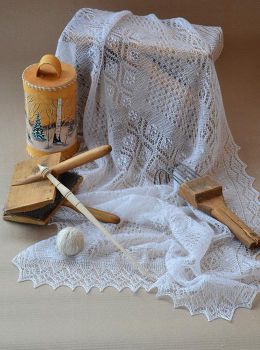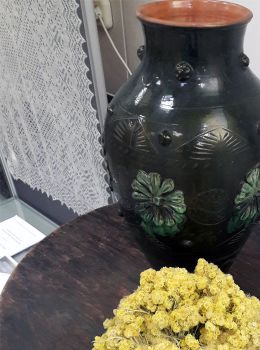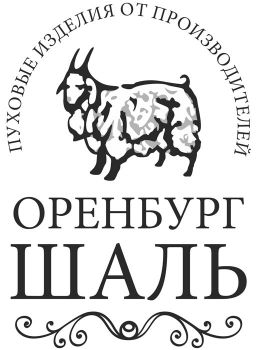Orenburg downy shawl: from generation to generation
What does the orenburg shawl mean to you?
We are sure that most people will say this is an accessory for grandmothers that everyone knows of because of their grandma's stories. Some will say this is a symbol of the Orenburg region, the souvenir that simply has to be brought home from Orenburg if one happens to visit the region. But there are also people who, having received an Orenburg downy shawl as a gift, or having bought it, become proud owners of an authentic and top-quality product. Not just a warm shawl, but a talisman for life. Each stitch of this warm shawl adds to the bridge connecting generations; the shawl is passed from mother to daughter, and it does not lose either its shape or relevance, or its valuable properties.
With proper care, the service life of an authentic downy shawl can be 100 years or even more, and there are historical accounts that prove this fact.
You might frown and think that we're assigning this seemingly simple element of clothing with too many fantastic properties. But rest assured, we know what we're talking about. And we'll be glad to tell you all the secrets of the magical aura surrounding our Orenburg downy shawl.
There is nothing more genuine and durable than a product of nature.
Let's start with the service life of our downy legendary item - it might serve people for centuries. The main guarantee of the downy shawl durability is its naturalness.
A shawl is knitted from down hair and silk, cotton or viscose yarn. You say – well, that's just down hair, what's so special about it? But the down hair from Orenburg goats is really unique. It is very thin (15-17 microns) and quite long (60-80 mm), flexible, strong (much stronger than regular wool), low felting properties. That is why downy products are soft and pleasant to the touch.
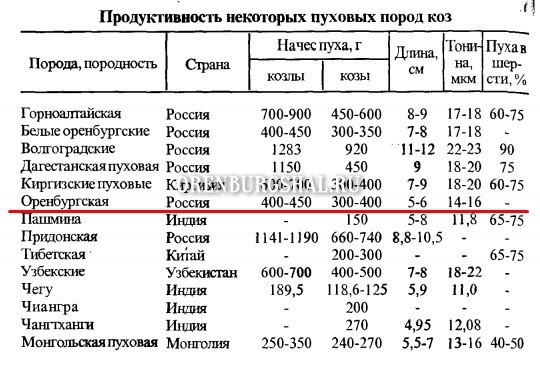
A.I. Yerokhin, V.V. Sokolov, G.A. Kuts, V.D. Khromchenkov, V.I. Zadumina. Goat breeding: Study Manual.
It is not for nothing that mother nature endowed our goats' down hair with such great properties. It is not easy to survive harsh winters and hot summers in Ural steppe without a good coat that could be shed in spring.
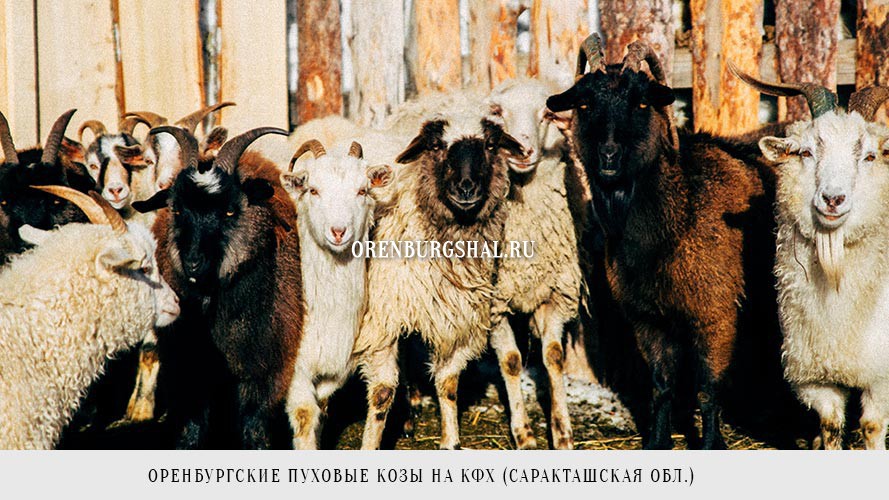
Note that not only animals but also people have to pass the test by our harsh climate!
Orenburg used to be home to the legendary Higher Military Aviation School of Pilots named after I. Polbin, and hundreds of Heroes of the Soviet Union were among its graduates, including Yuri Gagarin. The country's authorities placed this school in our harsh climate, where the annual temperature range is almost 100 °C. It is no wonder that such conditions tempered the character and courage of our heroes.

This climate is the actual key to the unique properties of down hair and the shawls made from it. The harsher the environmental conditions are, the more concentrated are the properties that nature gave to the animal fur and hair in order to compensate for the negative factors. The goats that live in our Orenburg steppes are not big but they survive in frost and cold that will be detrimental to any other goats.
Without harm or pain
Our region is known not only for its harsh winters, but also for the summer heat that can be unbearable. Few people are aware that the real watermelon capital of Russia is a small town of Sol-Iletsk located 70 km away from Orenburg. This is quite a unique combination: our goats have warmest down hair because of the unbearable cold in winter, and we have the biggest harvest of melons in summer - because of the scorching sun.
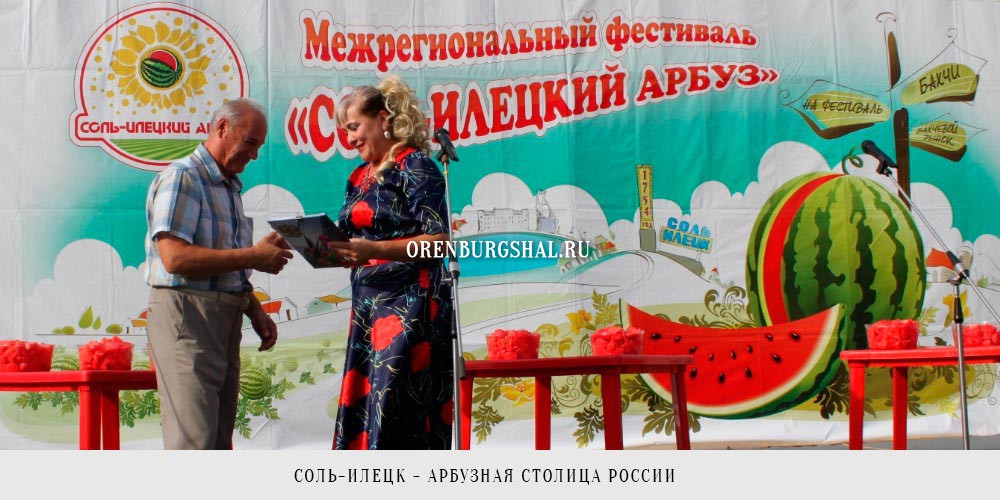
From February to March, goats start shedding their hair in order not to "get cooked" in their own coats during the warm season. This is when they get actively combed. Combing goats is a very time-consuming and long process. Everything is done exclusively by hand, with the help of special combs.
Combing leaves only guard hair on the goats -the downy undercoat gets combed out and becomes most valuable material for yarn-making. Thus, the entire process of obtaining down hair is absolutely painless; moreover, by removing down hairs a human helps goats get rid of their warm coats that, if kept, would be, disastrous for these animals in summer.
Why do we describe the process of obtaining down hair in such detail? We want to make sure that even the basic material used for shawl manufacturing is not associated with death or violence; down hair is obtained as a result of process that is beneficial for both people and animals. This symbiosis is based on love and care - humans help goats get rid of something they no longer need, and use these gifts of nature to their benefit. And this warmth, care and love are felt in every downy product. When you get wrapped in a shawl, you feel like there is no need to rush anywhere; you just want to sit and enjoy peace and comfort. You get a feeling that it's not just a shawl - it's the embrace of a dear person and you want to prolong it.
Note that only strong and LIVING down hair has such unique properties. If down hair is taken from a dead animal, it will be impossible to knit a quality shawl out of such material. You can't cheat nature.
What other warm product can boast of such a biography? Maybe an expensive mink fur coat? Hardly... By the way, good quality fur is taken from living animals, too.
Not magic, just specifics of material and technology of manual production
But why are we talking about decades of service life? We have already told you that Orenburg down is very thin and elastic. It turns out that if you take two downy threads of the same thickness, the one that is spun from Orenburg down will have a larger amount of goat hair, and it will be much stronger and exceptionally durable.
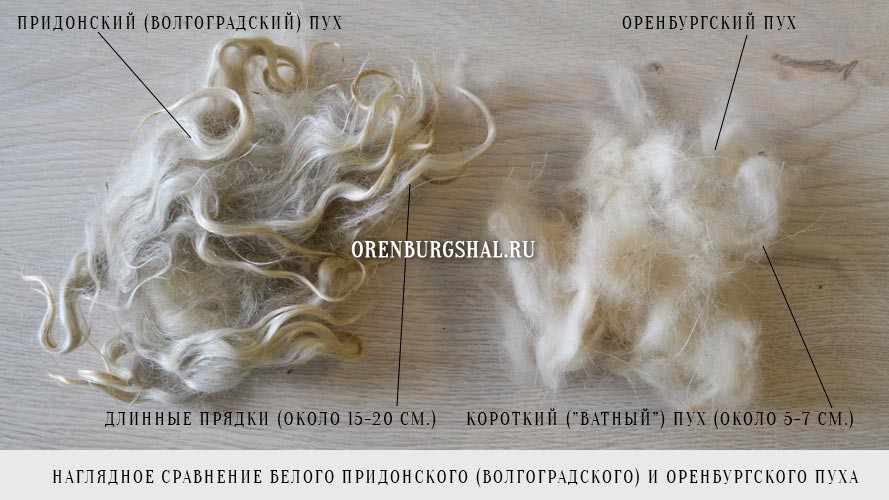
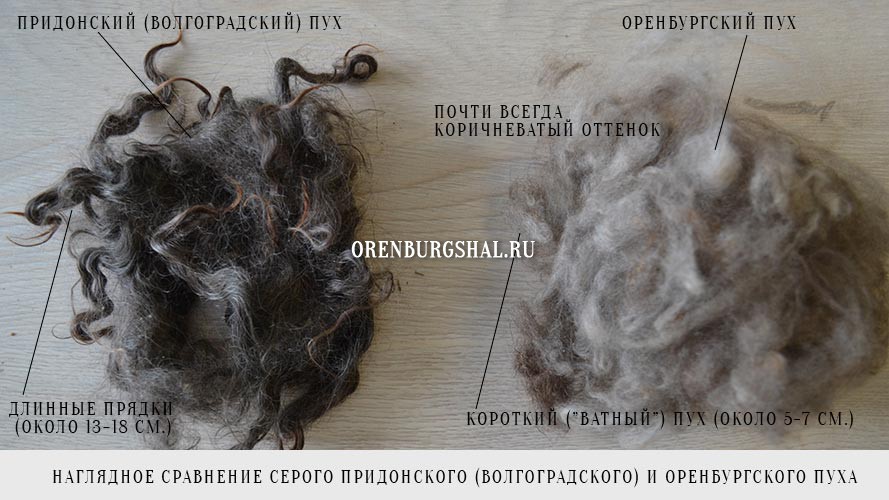
Downy thread is quite thick. Its thickness is about 1 mm (Photo of a thread), and the thickness of Orenburg goat down hair is only 14-16 microns. That is, each 1-mm-thick thread has about 70 down fibers. For example, a thread spun from Sochi (Volgograd) down has only about 40 down fibers. As they say, feel the difference.
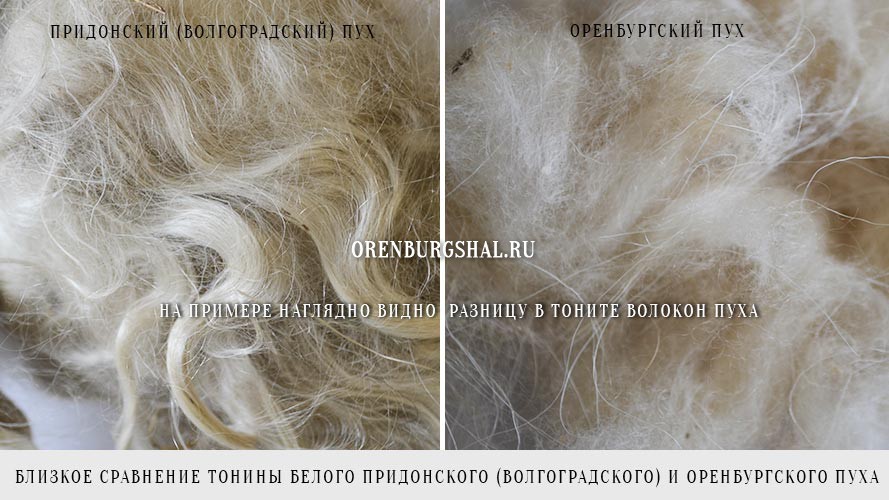
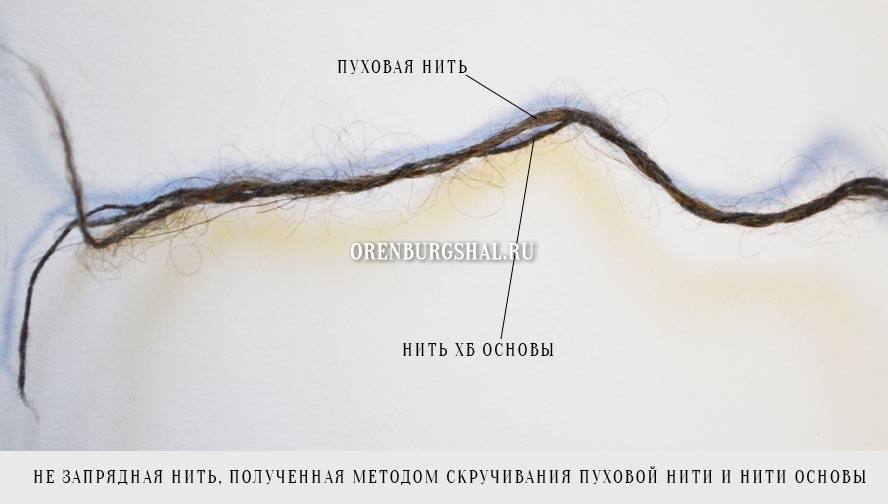
The process of spinning takes much time and requires not only patience but also skill. Downy thread is extremely strong (the breaking load for down fibers is 8.2 kg). But that's not all. To make it even more practical, down thread is combined with cotton or silk thread by means of twisting them together, almost like a braid. This process is called rubbing. After rubbing, the thread becomes about 1.5-2 mm thick and is ready for a long and useful life as part of a downy product.
Let us note that all above-described processes -from combing a goat to receiving a finished downy product - are manual labor, and not hours, but days and weeks of hard work.
And now a bit of magic
Who is able to knit a shawl that will have intricate and complex patterns all over its surface? This skill is not easy to learn; a knitter spends many years perfecting it and earning the reputation of "nimble-fingered." Only great talents can master this skill to perfection by the time they turn 30-40 years old. Most often, true works of art are created by those knitters who are already 40-50 years old.
These hard-working women spend the great deal of their time working with down hair and needles. For them, it is the love and work of a lifetime. You have to admit that it is very difficult to find a person who will be selflessly doing their favorite work for half a century. There are no random people in down-knitting. They are usually hereditary knitters. Those who are not inclined to this hard work, leave the craft immediately.
While for others, it becomes the meaning of their entire life. We say that such people have hearts of down - soft, warm and kind. There is so much light and love about them that even by giving a piece of their soul to each product, they become only richer! These women cannot imagine their lives without their favorite craft. Without something that warms their souls and pleases other people.
Their hands turn valuable down of Orenburg goats into warm, strong and reliable yarn that later on gets transformed, with the help of needles, into soft magic.
How long does it take to make a shawl?
So, how long does it take to create a downy scarf? If we start with the basics, we'll have to go back to down hair. On average, one goat gives 300-500 grams of down per year. This amount is needed to make a shawl with its each side being 120 cm long. That is, the knitting of one shawl requires a year of tending to one goat.
It is worth noting, however, that goats are quite easy to keep. And they are very clean. Therefore, keeping them is much less trouble than, let's say, keeping cows. Besides, usually people keep several goats, not just one; still, just imagine that one has to take care of an animal for a whole year, waiting for it to give its down hair.
Goats start to get combed in the period from February to March (usually from mid-February to early March). On average, it takes 4-8 hours to comb one goat, depending on its size and the amount of down.
Then the process of down hair preparation begins. It includes the removal of all impurities, washing and drying of down (several times), removal of guard hair, combing with fine combs or special machines - to get rid of balled down hairs. This is a very long process that requires great patience and perseverance. It takes at least 15-20 hours of continuous work to prepare one kilogram of down hair suitable for knitting.
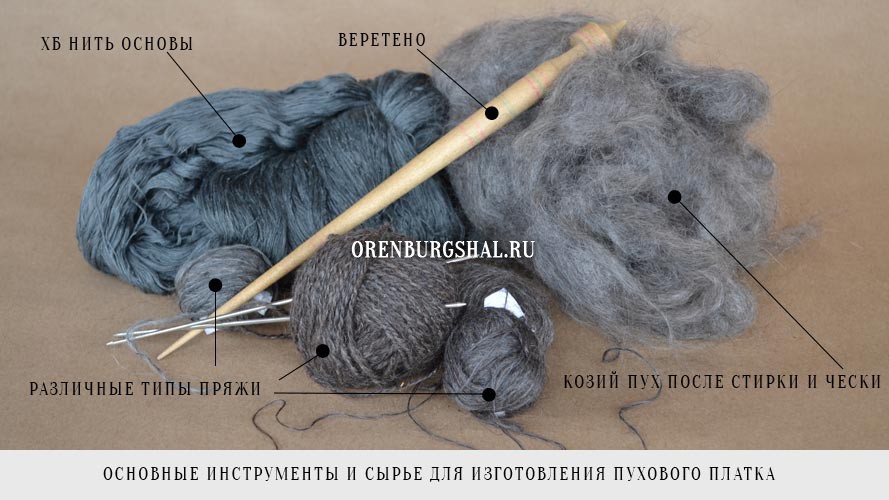
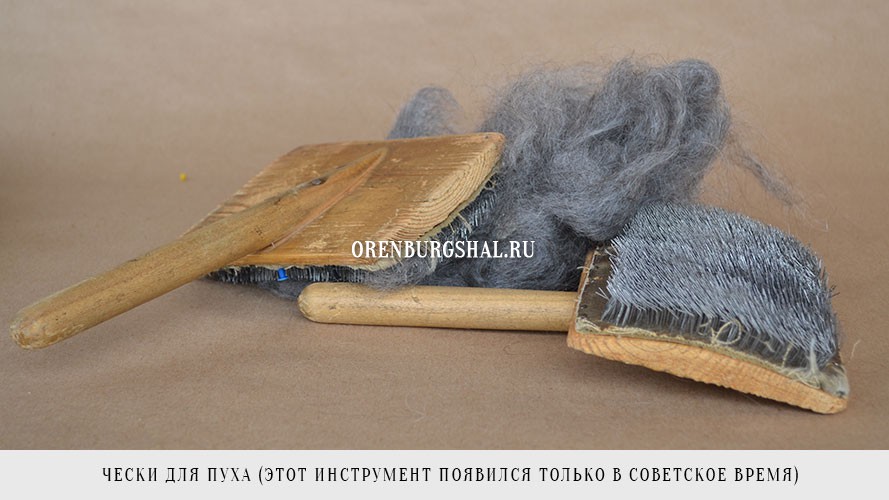
After the down is prepared, it is spun into a down thread that is twisted with a base thread (silk for web-like items or cotton for dense shawls). It takes about 20 hours to produce 300-500 grams of finished yarn .
The process of knitting. Here a great deal depends on the knitter's skill and experience. On average, knitting a shawl from prepared yarn takes 90-270 hours. (approximately 2-4 weeks).
Then the shawl has to be washed and stretched on a special frame, which also takes about 2-3 hours. And than one has to wait until the shawl dries and takes shape.
So, all in all, depending on the complexity of the product, it takes a knitter from 112 to 292 hours to produce ONE shawl.
Long hours of painstaking and hard work, when a shapeless mass of down hair gradually turns into a warm miracle, when a knitter creates a lacey story with her own hands - this is how true magic is done.
Hour after hour of skillful work - and there emerges a shawl, a work of art and a creation of these seemingly ordinary, but at the same time great people, bearers of tradition, craft and experience of generations.
And these people are truly great. They are quiet workers, with interesting lives worthy of historical novels. Their share of hard work would break any of the modern city residents. Only work and dedication - their life-long companions - supported them at all times.
Family amulet. from generation to generation
Our website features hundreds of reviews from our customers who are genuinely surprised by Orenburg shawls. They express their gratitude to the knitters and admire their work. But all these people are only at the beginning of a long warm journey.
Our main goal is to revive old Russian traditions, or, rather, to remind people about them.
For almost three centuries, Orenburg downy shawls have been symbolizing female and mother's warmth to many families.
A shawl would warm a woman during her young years when she attracted male looks, and would always emphasize her beauty and modesty. Intricate border patterns would surprise, and thick, warm texture would cause respect with those people who understand quality.
A girl would get married, give birth to children and wrap them in her shawl. A shawl would warm a woman in the cold and protect her from spring winds - seemingly warm yet quite chilly. Women would wear it to work, go to a factory or a field. They would get bundled up in their shawls at night when reading books to their children.
A shawl would be used as a cover in times of an illness, when it was necessary to get warm and sleep through all ailments. When children would grow up, the shawl would be passed from mother to daughter. In a new family, it would keep the warmth of mother's hands. It would be mended and darned, it would be worn till holes would appear in it. Initially a festive item of clothing, the shawl, now already worn-out, would become part of the family altar.
New generations would be born, and grandchildren would be wrapped in the old and worn shawl that once adorned their grandmother. And grandchildren would always respect and love the warm shawl that accompanied them through long winter walks in a sled or a stroller, tied over the hat or under the coat; they would remember how their mom or grandma covered them with it in cold winter evenings or when they had fever.
This very shawl would absorb the traditions of several generations and would become a witness to all the historic events of their family.
The very shawl now lies on the shelf in the closet, neatly folded, waiting. And no one would even consider throwing away this talisman; everyone knows it will always "give a helping hand", make you warm, help recover and cheer you up. This shawl would serve a family for decades of years (or even a century). And these are not our speculations; they are stories from life.
It is highly probable that you also have a warm and caring item that you inherited from your grandma or your mom. Here, in Orenburg, each family has an old mended shawl that is always ready to come to rescue.
But, unfortunately, traditions become forgotten and lost under the layer of newest fashion trends, technologies and hobbies. Over the past 30 years, our country has experienced many upheavals and changes. During this difficult time, many traditions lost their continuity. Some things got erased from the memory of the people, generations have changed, priorities have changed.
People started to forget about the shawl. Its place got taken by Ikea blankets or China-made throws capable of scaring you with quite a powerful discharge of static electricity. New economic conditions make the craft ousted, leaving it only to connoisseurs.
But we just want to say that by purchasing an authentic Orenburg downy shawl, you get not just a product that has outstanding practical and artistic properties - you find a friend for life. A friend who will make you, your children, and your grandkids warm; a friend who will be treated with love and awe for decades, and referred as a talisman, an amulet, a family treasure!


